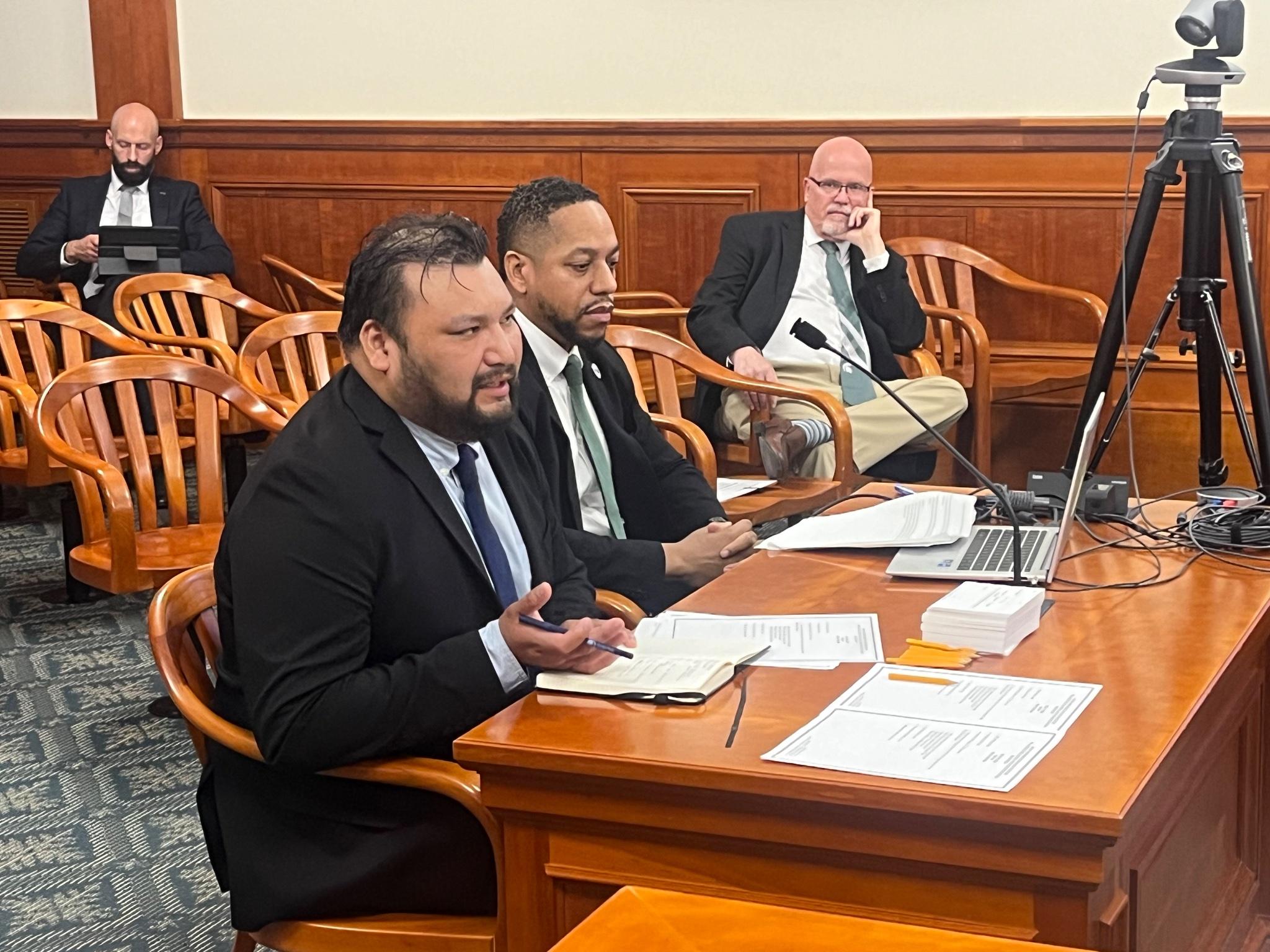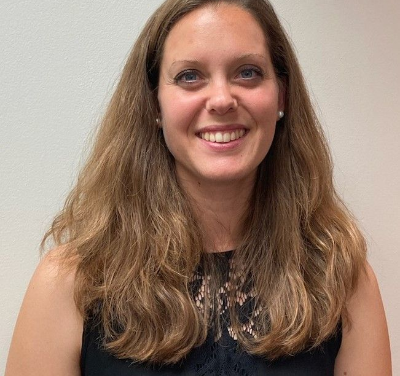Traverse City cherry, apple grower optimistic new climate program will address soil health
Raul Gomez, operations manager of Wunsch Farms in Traverse City, said changing climate patterns have shown the importance of accurately applying water and nutrients to the soil.
EAST LANSING, Mich. — From north to south along West Michigan, sandy soils border the coast between Lake Michigan and the inland part of the state. Found in this region is Traverse City, known as the “Cherry Capital of the World.”
Michigan produces about 70% of the country’s tart cherries, and from that, Traverse City produces roughly 40%. Cherry trees prefer sandy soils on rolling hills to grow. Tart cherries do best when they have multiple cold winter months to prepare for moderate summers.
Michigan produced about 133 million pounds of tart cherries last year, according to the U.S. Department of Agriculture National Agricultural Statistics Service. This was down from about 180 million pounds in 2022 and 202 million pounds in 2018.
Part of the reason for such varied production totals is due to changing climate patterns, said Raul Gomez, operations manager of Wunsch Farms based in Traverse City. The farm is a sixth-generation cherry and apple farm located on Old Mission Peninsula.

“We’ve had years where we’ll get everything ready for bloom, and we’ll get a spring freeze where we lose 25% to 50% of our crop,” Gomez said. “The big year I remember was 2012. We had a very cold winter and a big warm up in late March and early April. We experienced 60-degree temperatures for two weeks and then had a huge snowstorm that took quite a bit of our crop.”
The atypically warm winter Michigan experienced this year — with record-high temperatures in some parts of the state during February — has caused concern that fruit trees will bud early and crops will be damaged. Gomez said the trees on Wunsch Farms have experienced enough cool temperatures to prevent early budding from occurring, but noted he knows other growers in the state whose crops have already been impacted due to the sporadic temperature changes.
As Wunsch Farm transitions into the spring and summer months, Gomez said he’s starting to focus on how to manage water during the season.
“We’re lucky to be surrounded by water,” he said. “We have to be good stewards of our land and environment. For us, it’s been important to figure out how to maintain moisture in our soils and how to water when and where it makes sense — not just overwatering or watering because we can.”
To conserve water and keep nutrients within the soil, Gomez said he’s trying to find ways to avert water from draining through the sandy soil the farm’s cherry trees are grown in, while simultaneously being prepared for extended periods without precipitation.
“It’s become very unpredictable,” Gomez said. “We tend to work with patterns and timing, and historically we’ve been able to look at where we are in our seasons to help us manage our orchards. That’s really changed over the years.”
Because of the mild and relatively dry winter Michigan had this year, Gomez said the orchards will rely on its irrigation system at a higher rate than usual for the beginning of its growing season.
Gomez has worked with partners from MSU such as Nikki Rothwell, coordinator of the Northwest Michigan Horticulture Research Center and an MSU Extension fruit specialist, to develop strategies to ensure the farm’s orchards remain properly cared for. He’s also worked with Emily Lavely, an MSU Extension tree fruit educator for Michigan’s west central region. She’s helped Gomez curate several practices to mitigate effects from the evolving climatic obstacles Wunsch Farms has experienced.

Collaborating with MSU AgBioResearch scientists, including tree fruit pathologist George Sundin and entomologist Julianna Wilson — among many others — Lavely has provided knowledge on how to address problems across a wholistic scale.
In talking with tree fruit growers, Lavely said there’s a desire to better understand how to precisely apply water and nutrients so that they don’t get washed out or stuck in the sandy soil and trees can take full advantage of them.
Monitoring root systems, however, is more difficult than observing other aspects of tree growth due to, in part, their limited accessibility of being underground. Mix in the extreme dry and wet periods Michigan has experienced, and it becomes even more challenging to predict when to provide the proper amount of water and nutrients to the soil, Lavely said.
She said building an irrigation system is one strategy she’s seen work to effectively navigate the back and forth of dry and wet conditions.
“If you apply fertilizer but it doesn’t rain and you don’t have irrigation, the nutrients can’t move into the root system because most nutrients move with water,” Lavely said. “On the other side of that, if you make a fertilizer application and get a lot of rain, it’s going to wash it all out of the root zone.
“It’s critical we try to manage the water and nutrient resources we have while being aware of the weather conditions that might affect what we’re doing.”
Earlier this year, the formation of the Agricultural Climate Resiliency Program was announced. The program is a partnership among the Michigan Plant Coalition, the Michigan Department of Agriculture and Rural Development, and Michigan State University that’ll address long-term climate and water issues that impact most — if not all — of the state’s plant commodities.
On March 12, 2024, Gomez testified alongside MSU AgBioResearch director George Smith, MSU Extension director Quentin Tyler and several other Michigan farmers in front of the Michigan House Appropriations Subcommittee on Agriculture and Rural Development and Natural Resources regarding the areas of concern he’s seen on the farm, and how this program could impact them.
Because many of the techniques he practices are supported by models and research from MSU scientists, Gomez said he’s optimistic that this program will not only offer new solutions for some of the difficulties he’s currently facing on the farm, but also will allow him to remain proactive in safeguarding the farm’s crops for the future.
In addition to soil health, another topic Gomez said he’s interested in is how pollinators are affected by shifting temperature patterns. Bees don’t like to fly if the temperature isn’t above 50 degrees, he said, so securing out-of-state bees for the season while also trying to follow the temperature could become more complex.
“There hasn’t been a lot done toward these issues involving climate change, so it’s definitely an area that could benefit from different studies being done,” Gomez said. “From there, we can continue building out our toolbox with strategies we can use to tackle some of these new climate and water issues.”
Michigan State University AgBioResearch scientists discover dynamic solutions for food systems and the environment. More than 300 MSU faculty conduct leading-edge research on a variety of topics, from health and climate to agriculture and natural resources. Originally formed in 1888 as the Michigan Agricultural Experiment Station, MSU AgBioResearch oversees numerous on-campus research facilities, as well as 15 outlying centers throughout Michigan. To learn more, visit agbioresearch.msu.edu.



 Print
Print Email
Email




